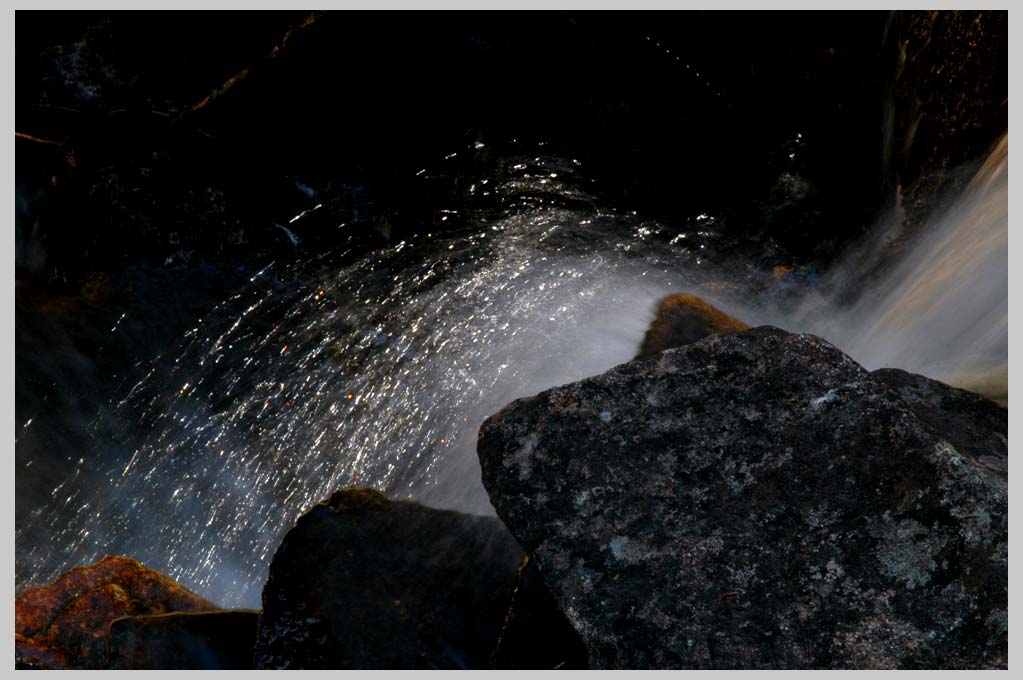

Dipper Falls, afternoon sparkles (VIII.25.08), Eagle Cap Wilderness . . .
On the road in the Northwest of America. [ click photo for next . . . ]


Dipper Falls, afternoon sparkles (VIII.25.08), Eagle Cap Wilderness . . .
On the road in the Northwest of America. [ click photo for next . . . ]
ON THE DYNAMIC BALANCE OF
PRIMARY CONTRASTS
What the rhythmic back and forth of sound and silence is
to music and poetry, so the movement of bright light and
deep shadow—white and black—is to the visual image.
Both are primary complementarities. In other words, if the
right balance between the poles of sound and silence, and
the poles of light and darkness is not found at this fundamental
level, the less basic planes of the composition will necessarily
rest, like a house with its walls out of plumb, on shaky ground.
In music and poetry, it seems to me that the back and forth
of sound and silence is directly related to the breath and
hence by implication to things spiritual; In the visual arts, the
contrast of white and black is more directly related to the realms
of being and non-being, or the explicitly manifest world of things,
people and other physical objects, and the more subtle realm
of the about-to-become of non-being.
As a general rule, I would say that the more silence, or the
more darkness, a composition can hold and yet still maintain
a kind of tension in balance between its complementary pole
of light or brightness, the more the composition tends to fill
the space with an air of mystery. This, however, is difficult to
achieve, and most likely not to be realized in any self-conscious
way. One can however simply be aware of its great latent
importance, and when lucky and when an opportunity presents
itself, get out of the way in time and simply let it happen.
TOO MANY VARIABLES
We shape the world and the world shapes us.
To master the complex, keep things simple.
To keep things simple, keep the number of variables
to but a single dial.
Turned all the way down, the dial produces the sleep
of rigid dogma; turned all the way up, it produces
the runaway confusion of random noise.
Better to keep things focused on the
clear limits of the middle way.
WATERCOURSE WAY
We shape the world and the world shapes us.
Balance in Art follows the natural movements of water
and weather. Fast mountain streams give way to the slow,
supple curves of lowland rivers, and the broad expanses of the sea.
Dark, cold rains are followed by bright skies and the happy warmth of
the sun.
Balance is never either / or, but rather the course which runs between
extremes.
The culture which has lost direct contact with these move-
ments of the symphony of life will also necessarily lose its sense of
balance and measure in its Art.
.ON THE DYNAMIC BALANCE OF
PRIMARY CONTRASTS is part of
THE LITTLE CLAVIER please preview 150 of 631 pages
w/ my black & white photography [opens in new window]
All Photographs & texts by Cliff Crego © 1999-2011 picture-poems.com
(created: VII.27.2008)